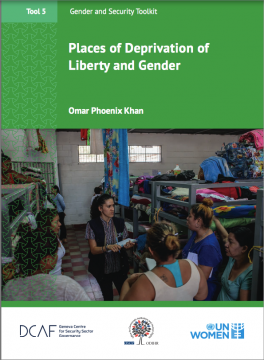Gender and Security Toolkit – Tool 5: Places of Deprivation of Liberty and Gender

Part of the Gender and Security Toolkit, this Tool:
- sets out in more detail why it is important to integrate a gender perspective into policies and practices concerning places of deprivation of liberty, covering key definitions related to the topic, including a discussion on non-binary understanding of gender and the importance of understanding intersectionality;
- highlights how integrating a gender perspective can help places of deprivation of liberty fulfil their purpose, as well as have a positive effect beyond the institutions themselves;
- provides a vision of what places of deprivation of liberty would look like if they successfully integrated a gender perspective into their policies and practices. This can be used to evoke and inspire change in places of deprivation of liberty.
- offers some specific steps that can be taken to integrate a gender perspective effectively within places of deprivation of liberty. While no country has completely integrated a gender perspective across all aspects of the functioning of places of deprivation of liberty, there are increasing examples of pockets of good practice from across the globe.
- provides a sample checklist that can be adapted for various places of deprivation of liberty and used by monitoring bodies to assess the integration of a gender perspective at such institutions;
- lists other useful resources.
The Toolkit was published with the support of the OSCE Office for Democratic Institutions and Human Rights (OSCE/ODIHR). Its content does not necessarily reflect the policy and position of the OSCE/ODIHR.
The views, opinions, conclusions and other information expressed in this document are not given nor necessarily endorsed by the Organization for Security and Co-operation in Europe (OSCE) unless the OSCE is explicitly defined as the Author of this document.
